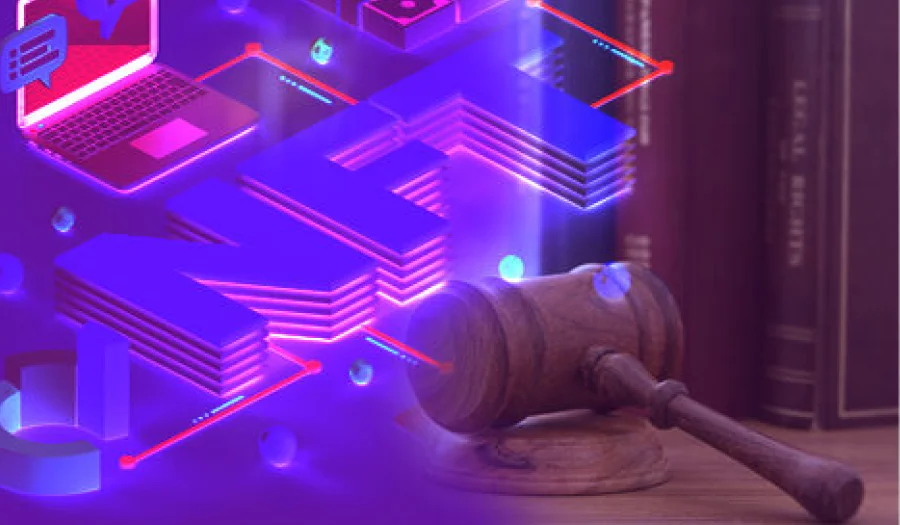This full guide aims to give you the knowledge and best practices. They are needed for making, deploying, and managing NFT smart contracts. It covers key stages. It covers initial prep and security. Then, it covers minting strategies and post-launch activities. This guide ensures you can make strong and efficient NFT projects. Additionally, it has many helpful resources. These include examples of well-written smart contracts, development guides, and API tools. They will improve your understanding and abilities in the NFT space.
Guide Overview
The 72 points of the checklist are grouped into 8 categories:
-
Initial Setup (points 1 - 7)
-
Security Measures (8 - 17)
-
Comprehensive Testing (18 - 29)
-
Gas Optimization (30 - 42)
-
Effective Deployment (43 - 48)
-
Minting Strategies (49 - 62)
-
Administrative Functions (63 - 69)
-
Post-Launch Activities (70 - 72)
You can go through the list from start to finish. It is in sections. They are meant to be chronological. They start with the setup stage and end with the post-launch activities. Alternatively, you can focus on specific sections. For example, if you’re only interested in gas optimization or the minting stage.
Initial Setup
This section is about preparing to create and deploy your NFT smart contract. It covers key decisions and tools. You need to consider them before starting your project.
1. Select the NFT Type
ERC-721
This is the most widely adopted standard for NFTs. It represents unique, indivisible tokens.
Use Cases:
-
CryptoKitties was one of the first and most popular NFT projects. It lets users breed and trade virtual cats.
-
Crypto Coven comprises more than 9 thousand witches. Each has unique traits and focuses on the mystical and magical.
-
Cool Cats is a collection of randomly generated NFTs. They are curated in a stylish way and on the Ethereum blockchain.
-
Bored Ape Yacht Club: A popular collection of 10,000 unique hand-drawn apes.
Reference: You can explore a list of ERC-721 Token Contracts on Etherscan.
ERC-1155
This standard supports batch transfers. It can handle fungible, semi-fungible, and non-fungible tokens.
Advantages: It allows batch transfers and can revert transactions in case of mistakes.
Use Cases:
-
Adidas Originals NFT is a collection made by Adidas. It is to engage with their community through digital ownership.
-
Gods Unchained: A trading card game where players own their cards and can trade or sell them.
-
Enjin is a gaming platform. It uses ERC-1155 to create and manage digital assets. It does this across many games.
-
Decentraland is a virtual world. Users can buy land and make experiences in it. They use ERC-1155 for in-game items.
2. Choose the Base Contract Implementation
OpenZeppelin:
-
Description: A widely used library providing secure and community-vetted smart contract templates.
-
Advantages: Well-documented, regularly updated, and includes various security features.
-
Use Cases: Projects like Compound, Aave, and OpenSea rely on OpenZeppelin. They rely on it for secure and standard contracts.
ERC721A:
-
This is an efficient implementation. It's optimized for lower gas fees. This is especially true when minting many tokens in one transaction.
-
It reduces gas costs for minting. This makes it ideal for projects with high transaction volumes.
Use Cases:
- Azuki: A collection that uses ERC721A for efficient minting.
-
Goblintown: A collection known for its efficient minting process using ERC721A.
-
Moonbirds: Another high-profile project leveraging the gas-saving benefits of ERC721A
Solmate:
-
Description: A gas-efficient, minimalist, and opinionated framework for building smart contracts.
-
Advantages: Focuses on reducing gas costs while maintaining simplicity and security.
Use Cases:
-
Rari Capital: Uses Solmate for its DeFi products to ensure gas efficiency.
-
Fei Protocol: Utilizes Solmate for its stablecoin operations to optimize gas usage.
3. Choose the Blockchain for Deployment
Selecting the blockchain for deployment is crucial. Different blockchains offer various benefits in terms of speed, cost, and community support.
-
Ethereum: The most popular choice, known for its security and large user base.
-
Polygon: A layer 2 solution offering lower fees and faster transactions.
-
Binance Smart Chain: Known for its low transaction costs and high performance.
4. Decide on Metadata Storage (On-Chain vs Off-Chain)
-
On-Chain: Stores metadata directly on the blockchain, ensuring immutability and permanence.
-
Off-chain: Stores metadata on external servers. They also use decentralized storage solutions, like IPFS. IPFS is cheap and flexible.
5. Use the Latest Solidity Compiler
Use the newest Solidity compiler. It has the latest features and security improvements.
-
Download the Latest Version: Available on the Solidity website.
6. Use Modern Development Tools
Use advanced tools to speed up your development process. They will also ensure high-quality smart contract code.
-
Hardhat: A flexible, extensible, and fast Ethereum development environment.
-
Foundry: A fast, portable, and modular toolkit for Ethereum application development written in Rust.
7. Set Up a Gnosis Safe for Proceeds and Royalties
Why Use Gnosis Safe:
-
It is a multisig solution. It requires many approvals for transactions. This prevents single points of failure.
-
Control: Ideal for projects involving multiple stakeholders. You can set it up to require approvals from a minimum number of participants (e.g., 2 out of 3).
Example Scenario: If your project has three main stakeholders, you can set up the Gnosis Safe to need approval from at least two of the three. This ensures no single person can unilaterally control or compromise the funds.
Reference: Gnosis Safe - a platform to manage digital assets on Ethereum.
Security Measures (Points 8 - 17)
This section covers key security issues. They aim to keep your NFT smart contract safe. It will protect it from common bugs and attacks.
8. Transparency of Private Data
Public Visibility: Nothing on the blockchain is private, including private variables. All data stored on the blockchain can be accessed by anyone.
9. Avoid Using tx.origin for Authentication
Phishing Risk: tx.origin should not be used for authorization checks as it can be exploited in phishing attacks.
10. Preventing Hash Collisions with encodePacked
Hash Collisions: abi.encodePacked can lead to hash collisions when concatenating different parameters.
Example:
bytes32 hash1 = keccak256(abi.encodePacked("a", "bc")); // Collides with keccak256(abi.encodePacked("ab", "c"))bytes32 hash2 = keccak256(abi.encode("a", "bc")); // Unique hash
11. Ensure Order of Function Calls
Ensure your code can handle function calls in any order or explicitly manage the order to avoid unintended state changes.
Example:
function combinedFunction() public {
method1();
method2();
}
In this case, method1 and method2 might be called in an unpredictable order.
12. Avoid Relying on Exact Ether Balances
Manipulating Balances: You can change Ether balances by sending ether to the contract. You can also do it by using self-destruct.
13. Safe Use of Delegate Call
Unlimited Power: Delegate calls give the delegated address full control over your contract’s state.
Example:
(bool success, ) = delegateAddress.delegatecall(data);
require(success, "Delegatecall failed");
14. Handling External Contract Reverts
Denial of Service: Failing to handle reverts from external contract calls can lead to denial of service.
Example:
(bool success, ) = externalContract.call(data);
require(success, "External call failed");
15. Checking Solidity Compiler Version Security
Compiler Bugs: Different versions of the Solidity compiler can have known security bugs.
Tip:
-
Check soliditylang.org for known bugs in your compiler version and read release notes before committing to a specific version.
16. Protecting Against Data Source Manipulation
Contracts rely on external data. They can be vulnerable to manipulation, like flash loan attacks.
17. Safeguarding Against Arbitrary String Storage
Injection Attacks are a risk. They happen when we let users store arbitrary strings. This can lead to injecting malicious scripts.
Example:
function sanitizeInput(string memory input) internal pure returns (string memory) {
// Implement sanitization logic to remove or escape potentially dangerous characters
}
Comprehensive Testing (Points 18 - 29)
Testing is critical. It ensures the reliability, security, and performance of your NFT smart contract. This section provides a comprehensive approach to testing.
18. Use Testing Tools
Blockchain-Specific Tools: Utilize testing tools tailored for your blockchain to ensure comprehensive testing.
Types of Tools:
-
Formal Verification: Proves the correctness of the code mathematically.
-
Symbolic Execution: Analyzes the execution of programs by tracking symbolic values.
-
Linters: Automatically check code for errors and enforce coding standards.
-
Test Coverage Analyzers: Measure how much of your code is tested.
Examples:
-
Truffle: A development framework for Ethereum.
-
Hardhat: An Ethereum development environment.
19. Achieve 100% Line and Branch Coverage
Ensuring all lines and branches of your code are tested can prevent critical bugs.
20. Write Unit Tests
Unit tests involve creating assertions. These specify requirements for a smart contract and test if they hold true.
Examples of Assertions:
-
"Only the admin can pause the contract"
-
"Non-admins cannot mint new tokens"
-
"The contract reverts on errors"
Example:
const { expect } = require("chai"); describe("MyNFT", function () { it("Should only allow admin to pause the contract", async function () { const [admin, nonAdmin] = await ethers.getSigners(); const MyNFT = await ethers.getContractFactory("MyNFT"); const myNFT = await MyNFT.deploy(); await myNFT.deployed(); await expect(myNFT.connect(nonAdmin).pause()).to.be.revertedWith("Ownable: caller is not the owner"); }); });
21. Perform Mutation Testing
Mutation Testing: Tests the effectiveness of your test cases by introducing changes to the code and checking if the tests catch them.
Tip:
-
Use tools like Stryker for mutation testing.
22. Ensure Consistent Code Formatting
Code Readability: Use tools like Prettier to maintain consistent code formatting.
Example:
{ "scripts": { "format": "prettier --write 'contracts/**/*.sol' 'test/**/*.js'" } }
23. Conduct Static Analysis with Security Tools
Static Analysis: Use tools to detect potential security vulnerabilities in your code.
Examples of Tools:
-
Slither: Static analysis tool from Trail of Bits.
-
Echidna: Fuzzing tool from Trail of Bits.
-
Manticore: Symbolic execution tool from Trail of Bits.
-
MythX: Paid service for smart contract security.
-
Mythril: Free edition of MythX.
24. Validate Access Control
Use access control modifiers like onlyOwner. They ensure proper access control on sensitive functions.
Example:
function pause() public onlyOwner { _pause(); }
25. Validate Inputs Properly
Input Validation: Ensure all inputs are validated for sensible ranges and lengths.
Example:
function setPrice(uint256 price) public { require(price > 0, "Price must be greater than zero"); price = _price; }
26. Verify Public and Private Functions
Function Visibility: Ensure public functions perform minimal required actions to avoid unnecessary exposure.
Example:
function publicFunction() public { internalFunction(); }
27. Simulate Minting Out
Minting Simulation: Test what happens when the last NFT is minted, both on the frontend and backend.
Example:
it("Should handle minting the last NFT", async function () { for (let i = 0; i < maxSupply; i++) { await myNFT.mint(); } await expect(myNFT.mint()).to.be.revertedWith("All NFTs have been minted"); });
28. Measure Gas Usage
Gas Efficiency: Measure and optimize gas usage for your contract functions.
Example Output:
·-----------------------------------------------------|----------------------------|-------------|----------------------------· | Solc version: 0.8.4+commit.c7e474f2 · Optimizer enabled: true · Runs: 200 | ·-----------------------------------------------------|----------------------------|-------------|----------------------------· | Methods | Min | Max | Avg | ·-----------------------------------------------------|----------------------------|-------------|----------------------------· | createNFT | 108,152 | 120,782 | 113,287 | ·-----------------------------------------------------|----------------------------|-------------|----------------------------·
29. Get Your Code Audited
A professional audit ensures experts review your code. It finds vulnerabilities you might have missed.
Example:
-
Engage a reputable firm like ConsenSys Diligence, OpenZeppelin, or Trail of Bits for a comprehensive audit
Gas Optimization (Points 30 - 42)
Optimizing gas usage is crucial for making your NFT smart contract efficient and cost-effective. This section covers strategies to minimize gas costs.
30. Consider Using ERC721A
Batch Minting Efficiency: ERC721A makes minting many tokens cheaper. It does this by updating the minter’s balance only once and setting the owner for a batch of tokens together.
Trade-Off:
-
Transfer Costs: Transfers with ERC721A are approximately 55% more expensive on average.
31. Avoid Using Enumerable Extension if Unnecessary
Gas Overhead: ERC721Enumerable adds lots of gas costs. This is due to extra mappings and arrays for tracking token ownership.
32. Prefer Mappings Over Arrays
Mappings allow direct access to values. They do not require iteration. This makes them more gas-efficient than arrays.
33. Use mint Instead of safeMint When Possible
Gas Saving: safeMint prevents minting to contracts that don’t support ERC721 transfers but costs more gas.
34. Implement Merkle Trees for Allowlists
Using Merkle Trees cuts the cost of managing large allowlists. They store a single hash, instead of many addresses.
Disadvantages:
-
Increased complexity in the mint function and front-end operations.
35. Utilize unchecked for Arithmetic Operations
Gas Optimization: Wrap math in unchecked blocks. This can save gas by avoiding overflow checks.
Example:
unchecked {
i++;
}
36. Optimize Solidity Compiler Settings
Enable the Solidity optimizer. It lowers gas costs for deployment and function calls.
Example:
{
"optimizer": {
"enabled": true,
"runs": 200
}
}
37. Stick to uint256
Avoid Variable Packing: Using smaller data types like uint8 or uint16 can increase gas costs due to extra casting.
38. Prefer external Over public
External functions are more gas-efficient. They do not allow internal calls, unlike public functions.
39. Avoid Unbounded Loops
Gas Limit Risk: Unbounded loops can cause functions to exceed gas limits if the array grows too large.
40. Minimize Unnecessary Re-Entrancy Protection
Gas Waste: Using non-reentrant modifiers on functions that don’t transfer ether or make external calls is unnecessary.
41. Optimize Storage Access
Gas Cost: Reading and writing to storage is expensive.
Example:
uint256 balance = balances[msg.sender];
balance += amount;
balances[msg.sender] = balance;
42. Reduce On-Chain Data Operations
Gas Savings: Minimize on-chain data operations and prefer off-chain computation where possible.
Tips:
-
Minimize Data: Only store essential data on-chain.
-
Compute Off-Chain: Perform calculations off-chain and store results.
-
Use Events: Store non-essential data in events instead of contract storage.
Example:
event DataStored(uint256 indexed id, string data);
function storeData(uint256 id, string memory data) public {
emit DataStored(id, data);
}
Effective Deployment (43 - 48)
Deploying your NFT smart contract is critical. It requires careful planning and execution to ensure security, efficiency, and success. This section covers essential strategies for deploying your contract.
43. Develop a Sensible Deployment Strategy
-
Security: Many deployment tools require private keys to be loaded unencrypted onto the hard drive. If this is necessary, take steps to isolate the computer or transfer ownership of the contract immediately after deployment.
-
Flattening and Hardware Wallets: Consider flattening your contract code and using a hardware wallet for deployment to enhance security.
44. Deploy Contract from a Burner Wallet
-
Security: Using a burner wallet minimizes the risk of your main wallet being compromised.
-
Privacy: Keeps the deployed contract unassociated with your main wallet for privacy reasons or secrecy before minting starts.
-
Consistency Across Chains: The contract address is deterministic and can be the same on multiple EVM-compatible L2s if deployed from the same wallet address.
-
Vanity Address: You can generate a desirable contract address by creating numerous wallet addresses until one fits a desired pattern.
45. Wait for a Cheap Gas Price
Gas Costs: Deploying contracts when gas prices are low can significantly reduce deployment costs.
Resources:
46. Check NFT Projects Calendar
Avoid launching your project when other high-demand NFT projects are minting. This ensures your project gets the attention it deserves.
Resource:
47. Verify Contract on Etherscan
Transparency is key. Verifying your contract on Etherscan lets others view the source code. This enhances trust.
Example:
npx hardhat verify --network mainnet DEPLOYED_CONTRACT_ADDRESS "Constructor argument 1"
48. Deploy Your NFT to a Testnet
Testing on a testnet lets you check your contract's function and look in a real-world setting. It does this without costing mainnet fees.
Steps:
-
Test the contract on an actual marketplace.
-
Verify all scenarios, including minting out.
-
Ensure all functionalities work correctly and that metadata and rarity information is not inadvertently revealed.
Tip:
-
Use testnets like Rinkeby, Goerli, or Ropsten for comprehensive testing.
Minting Strategies (Points 49 - 62)
You must properly structure your minting process. This is crucial for security, efficiency, and fairness in your NFT project. This section covers best practices for the minting stage.
49. Make a Separate Minting Contract
Error Isolation: Minting logic is a common source of errors. Keeping it separate ensures that errors don’t affect the main token contract.
50. Enhance Code Readability
Fixed Pragma: Use fixed pragma versions to avoid ambiguity.
pragma solidity 0.8.7;
No Magic Numbers: Use named constants for unexplained values.
uint256 constant MAX_SUPPLY = 10000;
Readable Keywords: Utilize readability keywords.
uint256 public constant AUCTION_DURATION = 1 days;
Require Messages: Include messages in require statements.
require(balance > 0, "Insufficient balance");
Descriptive Names: Use precise and descriptive names for variables and functions.
mapping(address => uint256) private balances;
51. Store Metadata and Media Files Safely
Choose a secure storage option for metadata and media files. You can use IPFS or a similar decentralized solution.
Tip:
-
Do not share URLs publicly and be careful with testnet launches to avoid metadata leaks.
52. Optimize Storage
Minimize Storage: Only store essential data on the blockchain to reduce costs for both deployment and minting.
53. Limit Token Supply
Supply Control: Implement a function to limit the total supply of tokens.
uint256 public maxSupply = 10000;
54. Protect Against Bots
Bot Protection: Limit the number of tokens that can be minted per wallet.
mapping(address => uint256) public mintCount;
55. Prevent NFT Sniping
-
Metadata Reveal: Reveal metadata only after minting.
-
Random Mint Order: Randomize the mint order to prevent deterministic minting.
-
Use Oracles: Consider using oracles like Chainlink for better randomization.
56. Avoid Re-Entrancy Bugs
-
State Changes First: Ensure state changes happen before external calls.
-
Use ReentrancyGuard: Utilize OpenZeppelin’s ReentrancyGuard.
Example:
contract MyContract is ReentrancyGuard {
function safeFunction() external nonReentrant {
// Function logic
}
}
57. Add Header and Comments to Contract Source Code
-
Documentation: Use headers and NatSpec comments for better documentation.
Example:
/// @title My NFT Contract
/// @notice This contract handles the minting of NFTs.
/// @dev Uses ERC721 standard
58. Accept Non-ETH Payments
-
Payment Flexibility: Implement functions to handle non-ETH payments, such as ERC20 tokens.
Example:
function withdrawERC20(IERC20 token) public {
uint256 balance = token.balanceOf(address(this));
token.transfer(msg.sender, balance);
}
59. Use New Solidity Error Types
-
Efficient Error Handling: Use Solidity’s new error type for more efficient and clear error messages.
Example:
error InsufficientFunds(uint256 available, uint256 required);
60. Handle Random Numbers
-
Randomization: Use oracles like Chainlink for verifiable randomness.
Tip:
-
For simpler cases, use pseudo-random seeds with keccak256.
Example:
uint256 random = uint256(keccak256(abi.encodePacked(block.timestamp, msg.sender)));
61. Handle Refunds
-
Automated Refunds: Implement a function to handle refunds efficiently.
Example:
function refund(address payable recipient, uint256 amount) public {
require(address(this).balance >= amount, "Insufficient balance");
recipient.transfer(amount);
}
62. Implement Whitelisting
-
Efficient Whitelisting: Use Merkle Trees for scalable and efficient whitelisting.
Example:
bytes32 public merkleRoot;
function setMerkleRoot(bytes32 root) public {
merkleRoot = root;
}
function verifyWhitelist(bytes32[] calldata proof, bytes32 leaf) public view returns (bool) {
return MerkleProof.verify(proof, merkleRoot, leaf);
}
Administrative Functions (Points 63 - 72)
This section covers key administrative tasks. It also covers post-launch activities. They ensure your NFT project runs well and continues to succeed after deployment.
63. Configure On-Chain Royalties
EIP-2981: Implement on-chain royalty standards to ensure creators receive royalties from secondary sales.
Example:
interface IERC2981 {
function royaltyInfo(uint256 tokenId, uint256 salePrice) external view returns (address receiver, uint256 royaltyAmount);
}
64 & 65. Withdraw Funds and Tokens
Fund Management: Implement functions to withdraw both native cryptocurrency (e.g., ETH) and ERC20 tokens from the contract.
Examples:
function withdraw() public onlyOwner {
payable(owner()).transfer(address(this).balance);
}
function withdrawERC20(IERC20 token) public onlyOwner {
uint256 balance = token.balanceOf(address(this));
token.transfer(owner(), balance);
}
66. Make tokenURI Upgradable
Upgradability: Allow the tokenURI function to be upgradable to fix bugs or update the NFT’s metadata format.
Example:
contract Metadata {
function tokenURI(uint256 tokenId) public view returns (string memory);
}
contract MyNFT {
Metadata public metadataContract;
function setMetadataContract(address _metadata) external onlyOwner {
metadataContract = Metadata(_metadata);
}
function tokenURI(uint256 tokenId) public view returns (string memory) {
return metadataContract.tokenURI(tokenId);
}
}
67. Reduce Supply
Supply Adjustment: Implement a function to reduce the total supply of tokens if needed.
Example:
uint256 public maxSupply = 10000;
function reduceSupply(uint256 newMaxSupply) public onlyOwner {
require(newMaxSupply < maxSupply, "New supply must be less than current supply");
maxSupply = newMaxSupply;
}
68. Efficient Pause Implementation
Emergency Management: Implement a pause function to halt contract operations if something goes wrong.
Example:
bool public paused = false;
function setPaused(bool _paused) public onlyOwner {
paused = _paused;
}
modifier whenNotPaused {
require(!paused, "Contract is paused");
_;
}
69. Emit Events When Important Things Change
Transparency: Emit events for big changes or actions. This provides transparency and makes tracking easy.
Example:
event OwnershipTransferred(address indexed previousOwner, address indexed newOwner);
function transferOwnership(address newOwner) public onlyOwner {
emit OwnershipTransferred(owner(), newOwner);
owner = newOwner;
}
Post-Launch Activities (Points 70 - 72)
70. Split Profits with the Team
Use profit sharing. Have a way to divide profits among team members. Ideally, use a multisig wallet.
Example:
address[] public team;
uint256[] public shares;
function distributeProfits() public {
uint256 balance = address(this).balance;
for (uint256 i = 0; i < team.length; i++) {
payable(team[i]).transfer(balance * shares[i] / 100);
}
}
71. Make a Long-Term Ownership Plan
Sustainability: Establish a long-term plan for managing profits from royalties and potential secondary collections.
72. Configure Your Collection on Marketplaces
Visibility: Make sure your collection looks great on major marketplaces. These include OpenSea, LooksRare, and X2Y2.
Steps:
-
Set up the main picture, banner, and description.
-
Verify that metadata is correctly displayed for individual items.
-
Ensure your collection and items are visually appealing and accurately described.
Helpful Resources
This section provides a collection of valuable resources to aid in the development and management of NFT smart contracts.
Learning Platforms:
-
CryptoZombies: An interactive Solidity coding tutorial.
-
Ethereum.org: Official Ethereum documentation and resources.
Development Tools:
-
Remix IDE: An online Solidity IDE for writing, testing, and deploying smart contracts.
-
Hardhat: A comprehensive development environment for Ethereum software.
Good NFT Smart Contract Examples
Learning from well-written NFT smart contracts can provide valuable insights and best practices.
Examples:
-
CryptoKitties: One of the earliest and most famous NFT projects.
-
CryptoPunks: A pioneer in the NFT space, with simple and efficient contract code.
-
Azuki: Uses the ERC721A standard for efficient batch minting.
Smart Contract Development Guides
These guides offer step-by-step instructions and best practices for developing smart contracts.
Guides:
-
OpenZeppelin Documentation: Comprehensive guide on using OpenZeppelin libraries.
-
Solidity by Example: A collection of simple Solidity examples.
-
Ethereum Development Documentation: Official Ethereum development documentation.
All the Best Resources to Learn From
A compilation of top resources for mastering NFT smart contract development.
Books:
-
Mastering Ethereum: A comprehensive guide to Ethereum and smart contract development.
Online Courses:
-
Consensys Academy: Ethereum developer programs.
-
Udemy Solidity Courses: Various courses on Solidity and smart contract development.
Communities:
-
Ethereum Stack Exchange: Q&A community for Ethereum developers.
-
r/ethdev: Reddit community for Ethereum developers.
NFT API
APIs can simplify the development process by providing ready-to-use functionalities for NFTs.
Popular NFT APIs:
-
Alchemy: Blockchain development platform with comprehensive API support.
-
Infura: Ethereum API for connecting to the Ethereum network.
-
Moralis: Web3 development platform with extensive NFT API capabilities.
Summary
The guide has covered key parts of making NFT smart contracts. It has covered their development, deployment, and management. Follow the steps and use the resources. They will ensure your NFT project is safe, fast, and successful. Each stage is critical. They include initial prep and security basics, minting strategies, and post-launch activities. They are key for making a strong NFT ecosystem.
By following this detailed guide, you will be well-prepared to create, deploy, and manage a successful NFT project. Use the provided resources and best practices. They will improve your development process and help you achieve your project goals.
Remember to keep educating yourself using the recommended resources. Learn from exemplary smart contracts, and use powerful development tools and APIs. This whole approach will help you stay ahead in the fast-changing NFT space. It will also help you make innovative and impactful digital assets.


 19 mins read
19 mins read








